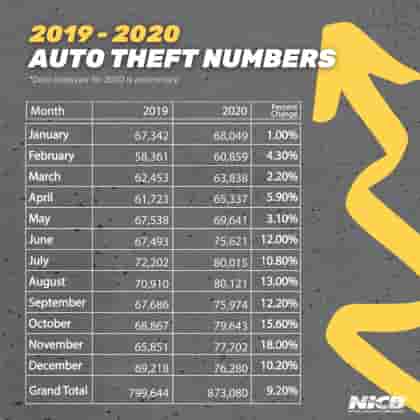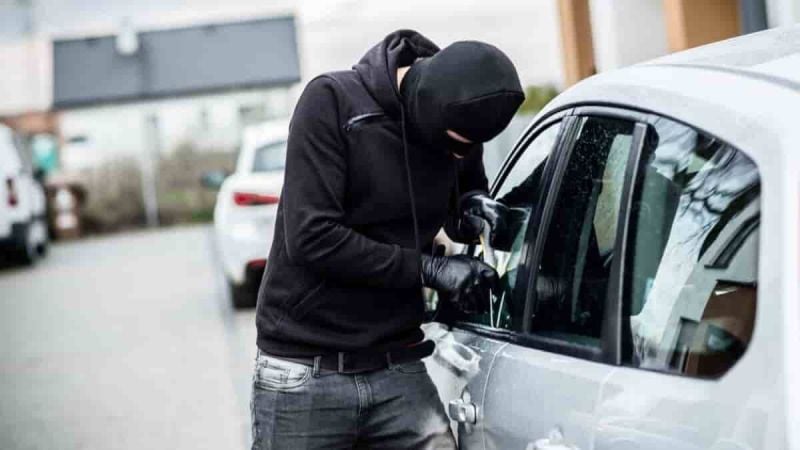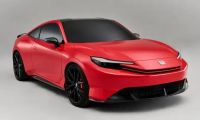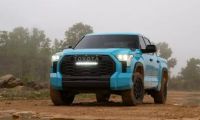The pandemic has been responsible for many things. For example, as detailed recently by Torque News, there was a jump in catalytic converter thefts. Thieves boosted the cats for the precious metals inside. Also, the COVID-19 pandemic has been responsible for a significant spike in car thefts. As you can see from a story I wrote, catalyst thefts are wreaking havoc on many American communities. Here's my look at communities that have felt catalyst theft. And now it is vehicle theft.
Pandemic Spike Reverse Vehicle Theft Trends
According to an initial study by the National Insurance Crime Bureau (NICB), there were 873,080 auto thefts in 2020, a 9.2 percent increase over 2019. This reversed a two-year decline in car thefts.
"Preliminary reports indicate a sharp increase in automobile thefts for 2020," said NICB President and CEO David Glawe. "All indications are 2020 will be the largest theft year in the past decade by a significant margin."
According to NICB findings, every month in 2020 showed an increase compared to 2019. Overall, the increase was 9.2 percent. However, each month from June to December showed double-digit gains.
"Based on the preliminary nature of the data, the cause of this increase will require a thorough intelligence assessment," said Glawe. "Considerations such as the pandemic, economic downturn, loss of juvenile outreach programs, and public safety budgetary and resource limitations are likely contributing factors. Thieves exploit opportunities and may look for vehicles parked in the same location or citizens not taking proper measures to secure their vehicles."
NICB urged people who may see something suspicious in their neighborhoods to contact law enforcement.
The anti-theft group distributed its data analysis in advance of its anticipated "Hot Spots" report given the unique circumstances of 2020. Due to the scrutiny the data receives from NICB analysts, "Hot Spots" will likely differ to a small degree from the initial analysis.
Responding to the increase in auto thefts, the NICB created a new public service announcement highlighting steps people can take to reduce the chances of having their vehicles stolen.
Vehicle owners have to guard against complacency, remembering to heed some simple tips to guard their vehicles. NICB recommends drivers follow four layers of protection to safeguard against vehicle theft. They are:
NICB Sets 4-Layer Anti-Theft Strategy
- Use common sense -- vehicle owners should always remove keys from the ignition, lock doors and windows, and park in well-lit areas.
- Install warning devices -- these include visible and audible alarms. Aftermarket alarms are available for all makes and models of cars. Visual devices include column collars, steering wheel locks, and brake locks.
- Install immobilizing devices -- the third layer of protection prevents thieves from bypassing the ignition and hot-wiring the vehicle. Some examples are smart keys; fuse cut-offs; kill switches; starter, ignition, and fuel pump disablers, and wireless ignition authentication.
- Consider installing tracking devices -- tracking devices are very effective in helping authorities recover stolen vehicles. Some systems combine GPS and wireless technologies to allow remote monitoring of a vehicle. Under this system, if the vehicle moves, the onboard system alerts the owner, who can then track the stolen vehicle. If the vehicle moves, the system issues an alert so the owner can track and find the vehicle.

Marc Stern has been an auto writer since 1971. It was a position that filled two boyhood dreams: One that I would write, and two that I write about cars. When I took over as my newspaper's auto editor, I began a 32-year career as an automotive columnist. There isn't much on four wheels that I haven't driven or reviewed. My work has appeared in Popular Mechanics, Mechanix Illustrated, AutoWeek, SuperStock, Trailer Life, Old Cars Weekly, Special Interest Autos, etc. Today, I am the Ford F150 reporter for Torque News. I write how-to and help columns for online sites such as Fixya.com and others. You can follow me on Twitter or Facebook. Most of Marc's stories are part of Torque News Ford coverage. Check back again and search for Torque News Ford F-150 news for more F-150 truck news coverage.












